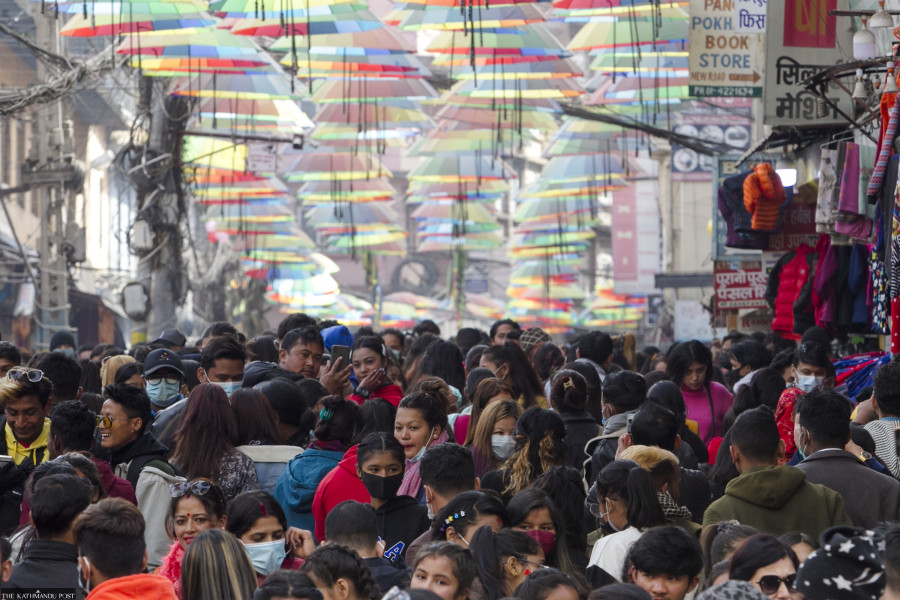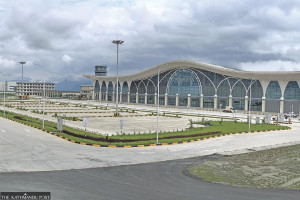Culture & Lifestyle
How do places deal with overnight fame
In the last few years, several places have gained overnight fame on the internet, but the repercussions have not always been pleasant.
Pinki Sris Rana
In the first week of March, videos of people dancing, singing, and wearing crowns made of chamomile plants in a beautiful chamomile field in Betana, Morang started flooding social media platforms like TikTok, Instagram, and Facebook.
In some of the videos, people could be seen mindlessly walking on the plants and plucking them as well. A few weeks after the field went viral, a distressing video of the same field came to light. The video shows a woman shouting at people taking videos and photos to come out of the field, and she also goes on to complain that in the name of making social media content, people have been plucking plants and destroying the field.
The chamomile field in Betana was one of the most recent places to go viral on the internet. But the video of the woman urging people to be respectful and not destroy the plants also highlighted the negative repercussions of a place going viral on the internet. Of the many places that have gone viral on the internet in the last few years, not all of them have gone down well with the locals.
“The chamomile field that became viral belongs to Herbs Production and Processing Company Limited (HPPCL), a government-owned company, located in Jadibuti, Bhaktapur,” says Kamal Rai, who is in charge of HPPCL’s Belbari branch.
Once the chamomile plants have fully grown, they are harvested and sent to the HPPCL factory in Kathmandu, where they make chamomile oil, which is then exported abroad.
“The woman shouting at people taking videos and photos in the field plants in the video is Dammari Maya Pokhrel, who is a daily wage worker employed by HPPCL to look after the chamomile field,” says Rai. “Her reaction in the now-viral video is justified. Our staff works hard to grow chamomile plants and take care of them. But seeing people randomly walk into the field and destroy the plants so that they could take photos and videos for their social media accounts was truly disappointing. We lost nearly Rs two million worth of chamomile flowers from this whole ruckus.”
In December 2020, Sankata Club and Kathmandu Metropolitan City’s Ward No 22 decided to install colourful umbrellas above the street from New Road Gate to Sankata Temple. Dubbed the ‘Umbrella Street’, the place quickly went viral, and hordes of people started visiting there to take photos and videos.
According to an interview given to the Post by Ashis Man Singh, secretary of Sankata Club, in December 2020, the street started attracting around 15,000 people every day. Just three weeks after installing the umbrellas, the club and the local ward decided to remove the umbrellas because the locals were worried about Covid transmission, and the crowd was also disrupting vehicular movement and hampering local businesses in the area.
Another place that went viral in 2020 was Tanahun’s Manungkot. In October that year, a few weeks after the government loosened lockdown across the country, photos and videos of stunning sunrise views from Manungkot went viral on the internet. And very predictably, thousands of people started visiting the place daily. Before becoming viral, Manungkot saw minimal visitors and most of them were from the nearby town of Damauli and surrounding towns and villages. But once many people started visiting the hilltop, it became evident that the destination was unprepared to accommodate so many people. The area's locals started raising concerns about the place's inability to handle that many people.
For weeks, hundreds of two-wheelers and four-wheelers could be seen parked in a rather mismanaged way on the road leading up to the hilltop.
On November 17, 2020, a microbus carrying 16 passengers swerved from the road to Manungkot; one casualty was reported from the accident.
In an interview with the Post the same year, Baikuntah Neupane, the Mayor of Vyas Municipality said, “The road to Manungkot is under construction. It is a steep and rough road. That is why the microbus driver could not manoeuvre his vehicle through the steep road.”
With crowds also came a huge increase in litter.
“When thousands of people started visiting Manungkot daily, we saw a huge increase in emptied plastic and glass bottles, noodles and biscuit packets. The influx of people also caused traffic and parking problems,” says Mohan Kumar Shrestha, spokesperson of Vyas Municipality.
According to Shrestha, a few weeks after going viral, the municipality started installing safety railings and garbage disposal bins.
“But visitors continued to litter and not use the provided bins. Later, we decided to hire a day labourer to clean the place twice a day,” says Shrestha.
A little over an hour’s drive from Manugnkot is Leknath, which is home to Begnas Lake and Rupa Lake. The lakes are popular among tourists visiting the nearby Pokhara. Rishav Adhikari, a Lekhnath-based photographer, knows the negative repercussions that often come when places go viral all too well. Adhikari, who goes by the name Shutter Psycho, is a core member of Ghumante, a group of travellers who visit places in the country and make travel videos.
“In 2020, we were just exploring around Begnas, and we came across a beautiful secluded waterfall. We posted a photo of it online, and it got shared widely. The next time we went to the waterfall, it was crowded with so many people, and some people were charging visitors money to visit the falls. That was when I learnt my lesson,” says Adhikari. “In the age of social media, it’s understandable that people want to visit places that are trending, but as visitors, it is important to be mindful of our impact.”
Many establishments have also attempted to make their places go viral to attract people. Inspired by the huge footfall that New Road’s ‘Umbrella Street’ managed to draw in 2020, the management committee of Lagankhel’s ABC Complex, which opened in September last year, also decided to install umbrellas inside the complex.
“A lot of people did come to the complex but the shopkeepers were a little annoyed because the majority of people that visited did so just to make TikTok videos and didn’t purchase anything,” says Ranjan Thakuri, manager of ABC Complex. “But I think the move was beneficial and helped us in promoting our complex.”
Going viral isn’t an inherently negative thing. While Manungkot might have initially struggled to cope with the sudden surge in visitors, it is now better poised to cater to tourists. There are now hotels where guests can stay, which wasn’t the case in 2020, and it has become a must-visit site for people visiting the nearby Damauli.
A little over a year after it first went viral, the number of visitors have also levelled.
“Compared to several thousand visitors daily in 2020 and early 2021, we now see around 200 to 300 people during the weekends,” says Shrestha. “Manungkot is better managed than it was.”
Meanwhile, HPPCL’s Rai is still disappointed at what transpired after his company’s chamomile field went viral.
“The indifference people displayed at the field has been very upsetting. Regardless of where you are visiting, it is important to be respectful of the place and not harm it in any way,” says Rai. “Had people just come and taken photos and videos without destroying the chamomile plants, it would have been fine by us. People have the right to enjoy places, but they ought to do so responsibly.”




 7.12°C Kathmandu
7.12°C Kathmandu















